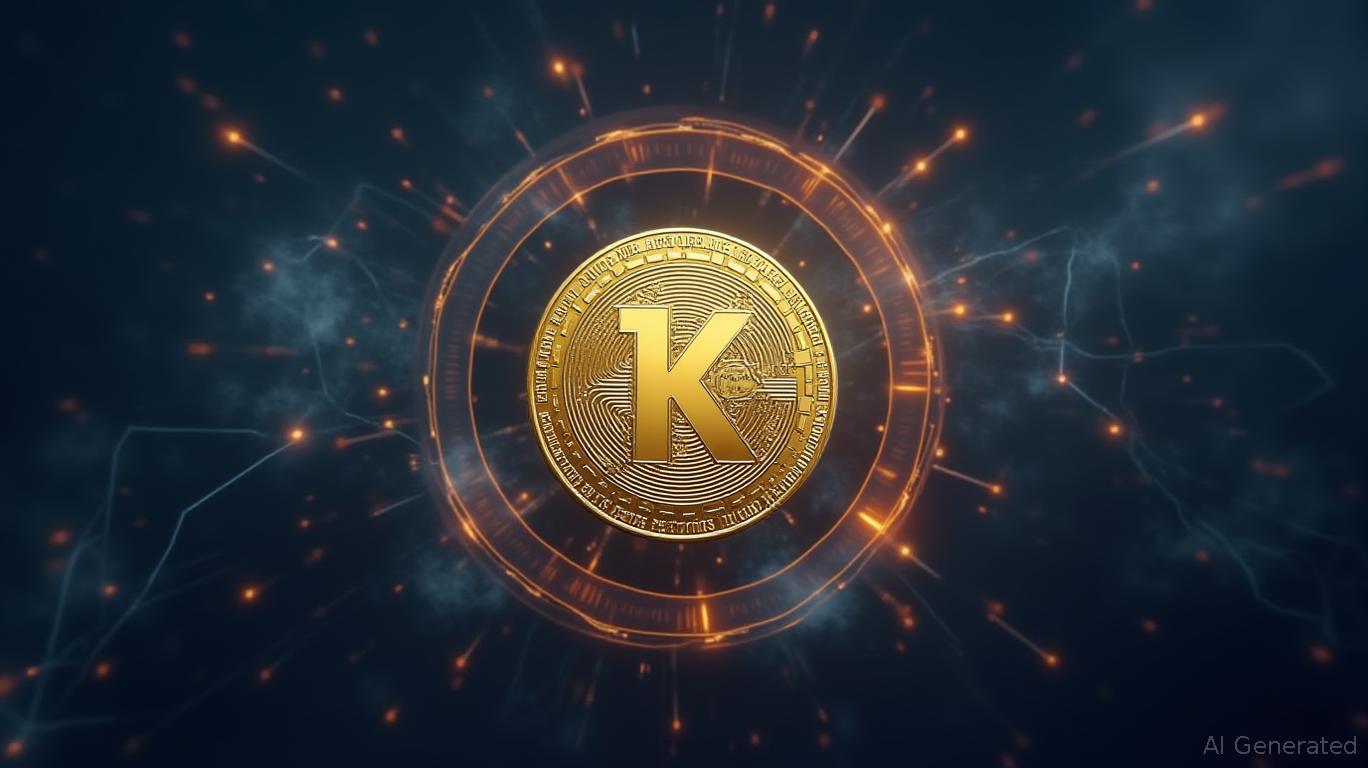Regulatory Concerns Intensify with the Introduction of South Korea's KRW1 Stablecoin into Arc's International Network
- Circle's Arc blockchain, designed as an "economic operating system," offers sub-second finality and USDC-based fees to streamline global finance. - South Korea's BDACS plans to deploy KRW1, a won-pegged stablecoin on Arc's testnet, bridging Korean markets to global stablecoin networks. - Arc's testnet has attracted 100+ institutions including BlackRock and Visa, aiming to redefine cross-border payments and asset tokenization. - Regulatory debates persist as South Korea's Bank of Korea proposes restrictin
Jeremy Allaire, CEO of Circle, has introduced the company's new Arc blockchain as "an economic operating system for the internet." This platform aims to modernize global financial systems by offering stable transaction fees, near-instant settlement, and compatibility with fiat-linked stablecoins. The concept is gaining momentum, with South Korean crypto custodian BDACS revealing plans to launch KRW1, a won-pegged stablecoin, on Arc's testnet. This move represents a notable advancement in bringing Korean financial technology into the worldwide stablecoin landscape, as reported by a
Since its testnet debut on October 28, 2025, Arc has drawn participation from over 100 organizations, including major players like BlackRock, Visa, Goldman Sachs, and State Street. This highlights Arc's potential to transform international payments and capital markets. By utilizing

The KRW1 stablecoin from BDACS, which is fully backed by the South Korean won, is intended to help Korean companies connect with global stablecoin platforms. The Busan-based custodian has entered into a memorandum of understanding (MOU) with
Arc is gaining traction due to its flexibility in serving both regulated and emerging markets. Stablecoin issuers from countries such as Japan, Brazil, Mexico, and the Philippines are already piloting their tokens on Arc, with KRW1 joining these efforts. This supports Allaire's claim that Arc is built to link "every local market to the global economy," a statement backed by its partnerships with leading financial firms and fintech companies, as outlined in the Circle press release.
Nonetheless, regulatory discussions continue. Sangmin Seo, chair of the Kaia DLT Foundation, criticized the Bank of Korea's (BOK) suggestion to limit issuance of won-backed stablecoins to banks, calling the idea "illogical." Seo argued for transparent regulations that apply to all issuers, whether banks or not, to encourage innovation while managing risks, as reported by Coinotag. The BOK maintains that allowing only banks to issue such stablecoins would better address anti-money laundering (AML) concerns under current laws.
Market trends demonstrate Arc's expanding role: stablecoins now have a combined market capitalization of $170 billion, with USDC alone exceeding $72 billion in circulation. Circle's recent collaborations, such as with ClearBank for European stablecoin transactions and Hyperliquid for DeFi integration, further strengthen its network, according to an
Allaire sees Arc eventually becoming a "shared, neutral layer of economic infrastructure" managed by a decentralized network of stakeholders. While Circle currently oversees the platform, the long-term vision is to shift toward community-led governance, keeping Arc open and responsive to global financial demands, as stated in the company's press release.
As the rollout of KRW1 continues, industry observers will be watching how regulations and market forces influence the adoption of stablecoins. For now, Arc's testnet is gaining momentum, supported by institutional involvement and strategic alliances, positioning it as a key force in the evolution of onchain finance.
---
Disclaimer: The content of this article solely reflects the author's opinion and does not represent the platform in any capacity. This article is not intended to serve as a reference for making investment decisions.
You may also like
FTSE Russell and Chainlink Transform Markets by Integrating Conventional and DeFi Indices
- FTSE Russell partners with Chainlink to publish market indices onchain via DataLink, bridging traditional and decentralized finance. - The collaboration provides real-time, tamper-proof data for indices like Russell 1000 and FTSE 100 across 50+ blockchains, supporting $18T AUM. - This initiative accelerates tokenized asset adoption and enables next-gen financial products, leveraging Chainlink's $25T-secured infrastructure for institutional-grade trust. - By democratizing access to benchmarks, the partner

South Korea's Rapid Growth in Stablecoins Meets Regulatory Hesitation
- South Korea is rising as a key stablecoin hub, balancing innovation with regulatory scrutiny as Tether and local projects reshape global finance. - Tether now holds $135B in U.S. Treasuries, surpassing nations like South Korea and UAE, positioning it as a major Treasury market influencer. - BDACS launched KRW1, a won-pegged stablecoin on Circle's Arc blockchain, aiming to integrate Korean businesses into global blockchain networks. - Bank of Korea warns of depegging risks for private stablecoins, contras

Traders Rush to Decentralized Exchanges Amid Centralized Platform Disruptions and Concerns Over Asset Security
- DEX trading volume hit $613.3B in October, a 22.7% surge led by Uniswap ($170.9B) and PancakeSwap ($101.9B). - Market volatility and CEX outages (e.g., dYdX’s $462K compensation plan) drove traders to DEXs for self-custody and yield strategies. - Stablecoin transactions ($2.82T) and new DEX projects like Terminal Finance ($280M pre-launch liquidity) highlight decentralized finance’s growth. - Binance retained CEX dominance with $810.4B volume, but DEXs now account for 19.84% of total exchange activity. -

Bitcoin Updates: Major Holders Accumulate $260M in Bitcoin While ETFs See $799M Withdrawn
- Bitcoin, Ethereum, and XRP fell in early November amid waning demand, ETF outflows ($799M for Bitcoin), and $2.6B in exchange withdrawals linked to whale activity. - Technical indicators showed bearish signals: Bitcoin below key EMAs, Ethereum near $3,700 support, and XRP's open interest declining as pressure mounted. - Despite short-term selloffs, Ethereum ETFs saw $9.6B Q3 inflows, while structural bulls controlled 68.6% of Bitcoin supply, hinting at potential accumulation phases. - Macroeconomic risks
